Click Here To Join Our Telegram Channel for FREE daily tutorials!
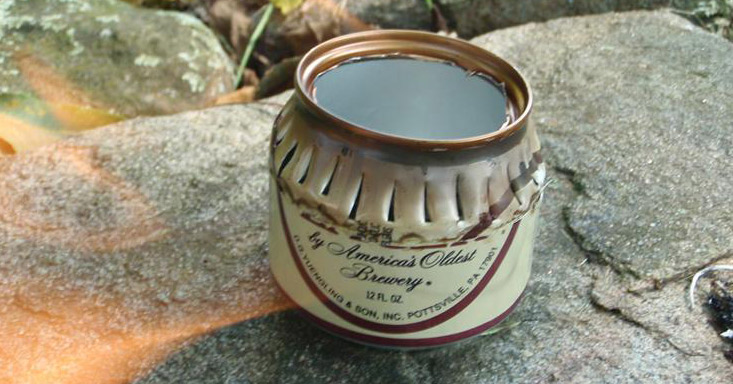
Beer can help you survive. Just ask Clifton Vial of Nome Alaska, who was stranded for more than 60 hours outside of town on Nov. 28, 2011. While he was out for a drive, his truck veered into a snowdrift, and with no cell service, he couldn’t call for help. He was wearing only jeans, a thin jacket, and sneakers. Vial did everything he could to endure temperatures of 17 below zero. He insulated his clothing with random rags and used the truck’s heater for warmth until he ran out of gas. For nourishment and hydration … you guessed it, he turned to a few cans of frozen Coors Light. Mr. Vial survived his ordeal thanks to turning his attention to an unlikely hero – a beer can. Check out these 14 ways to use one to survive.
Boil water
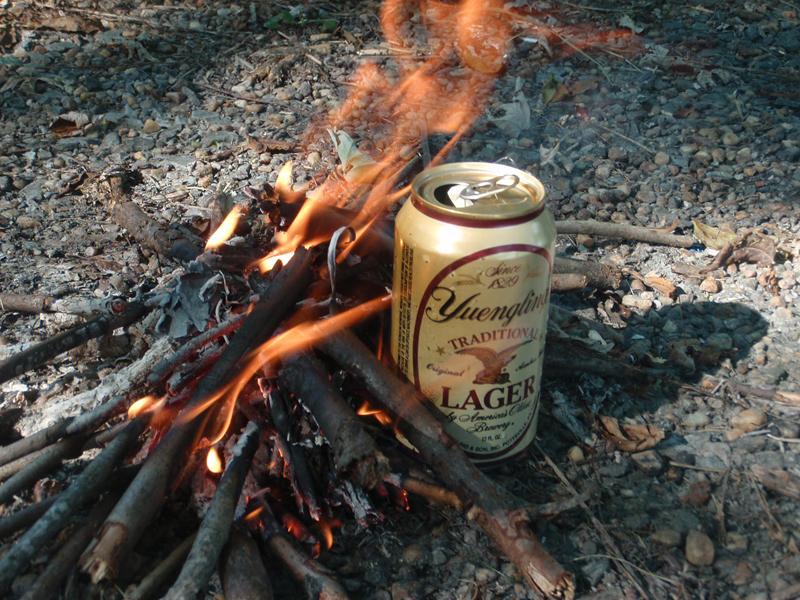
One man’s trash… right? Just a single can of beer is capable of becoming a lifesaver if the can is used to boil raw water to make it safe for human consumption. The trick with boiling in cans is to set the water-filled can next to the fire; in the ashes. Do not place the can in the center of the fire, as the metal will break down quicker. In 10 or 15 minutes, the water will start to boil. Then boil for 10 additional minutes just to be on the safe side. Let the water cool and have yourself a pathogen-free drink.
Make char cloth for flint and steel

This will be a one-shot deal, but a beer can is capable of producing usable char cloth for flint and steel fire making. Cut the top off the can and pack the inside with fibrous tree bark, punk wood or cotton cloth. Fold the top of the can shut and throw the can into the campfire for exactly five minutes. The can should be melting by the end of five minutes, but if you are lucky, your char cloth will be ready before the can disintegrates.
Fishing reel

This classic fishing reel can be made of almost anything cylindrical, but the beer can makes a fine spool for storing the fishing line. It’s even possible to cast the line right off the can. To make your fishing kit, tie the monofilament to the can’s pull tab, or better yet, tie the line through a small hole that you have pierced through the can. Wind up the line around the can, trying not to overlap the mono too much. For storage, put a rubber band or tie a string around the can and mono to keep it from unraveling. The can fishing rig casts a bit like an open face reel, so be patient and be cautious to avoid tangling the line.
Fire starter
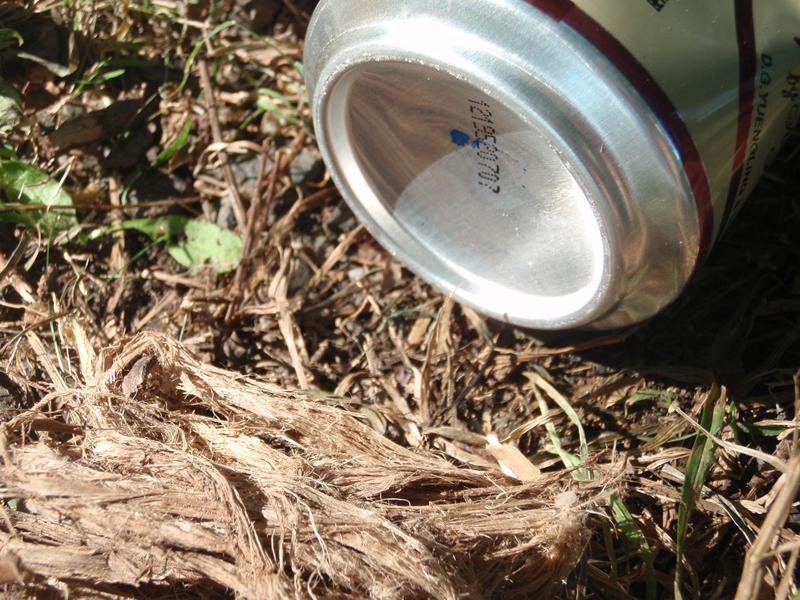
This method plays off the principles of optical fire making. Polish the can with little smears of chocolate to create a shine so the light of the sun can be reflected off the can’s concave bottom. Select a fine, fluffy tinder, preferably one that has a dark color. Play with the zenith and azimuth angles of the can until you get some smoke coming from your tinder.
Pull tab for a fish hook
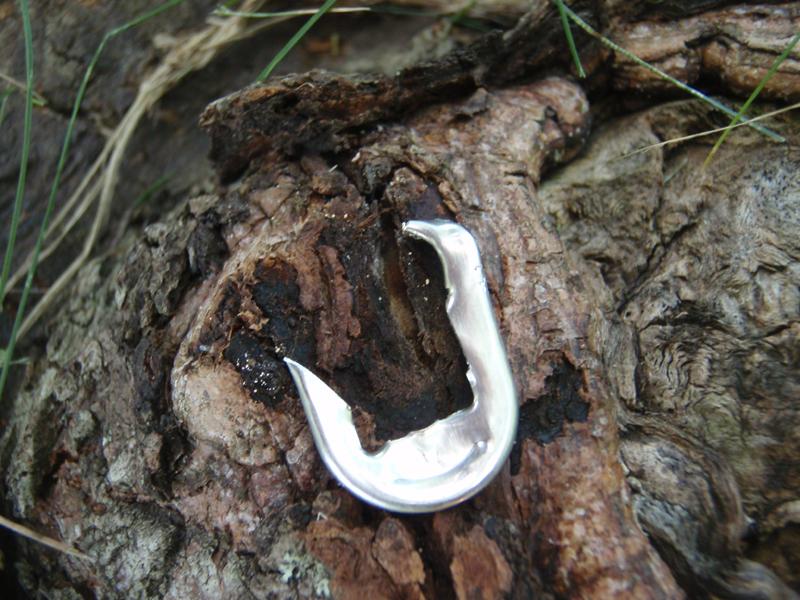
While a soft, malleable fish hook is just about the worst fish hook you could ask for, you can catch fish by using a gorge hook fishing technique and some pretty flimsy improvised hooks. Break off the can’s pull tab, and cut out a section of the tab so that it looks like a fish hook. Sharpen the hook tip to a point, attach it to your line and bait it appropriately. Instead of trying to set the hook in the fish’s mouth when he bites, give him some line and let the fish swallow the hook. The pull tab hook will hang up on the soft stomach or esophagus a lot better than it would pierce the fish’s jaw. Be advised that this is not a catch-and-release method, as you’ll probably be ripping the fish’s guts out to retrieve the homemade hook. This is survival fishing.
Candle lantern

I love a good, cheap little camp lantern. A simple candle nub and a creatively carved up can will give you a surprising amount of light for a cheap price. It’s even lightweight. Just cut a line down the side of the can. Cut two more lines so that the cuts resemble a capital “I”. Fold open these little double doors and drop in a tea light candle, or add a hand full of sand and stick a candle chunk inside the lantern. Hang it from the pull tab on a nearby twig, or hang it from a piece of wire. Don’t hang the lantern from the pull tab with a meltable or flammable line. Trust me, those lines won’t last long above the hot candle.
Bow drill friction fire socket
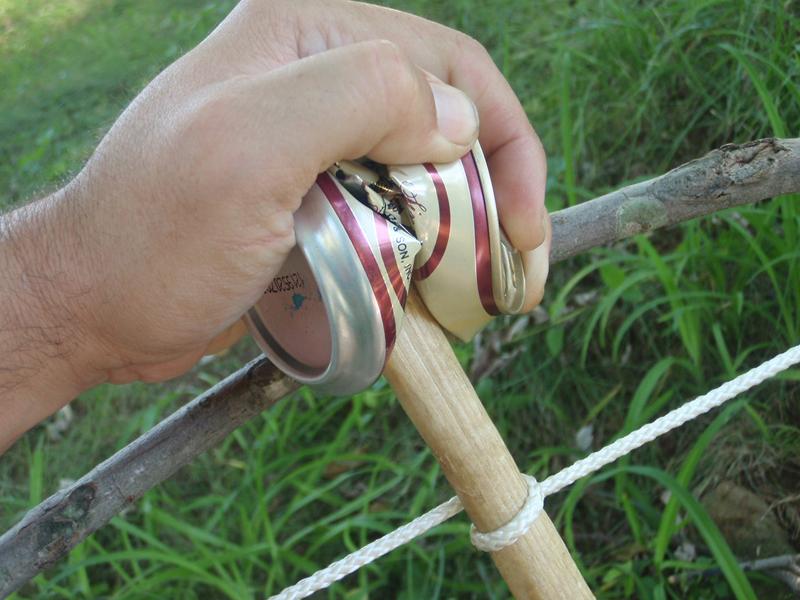
Another way to get fire from the can is to use it as a bow and drill fire component. The bow and drill method has the muscle to work through cold and wet situations, but it needs to spin freely at the top of the drill. Crush the can so that it has folds in the side which will receive the top of the drill. The slick metal will not require any lubricant like a wooden block would. However, it will get hot very quickly.
Reflective signal
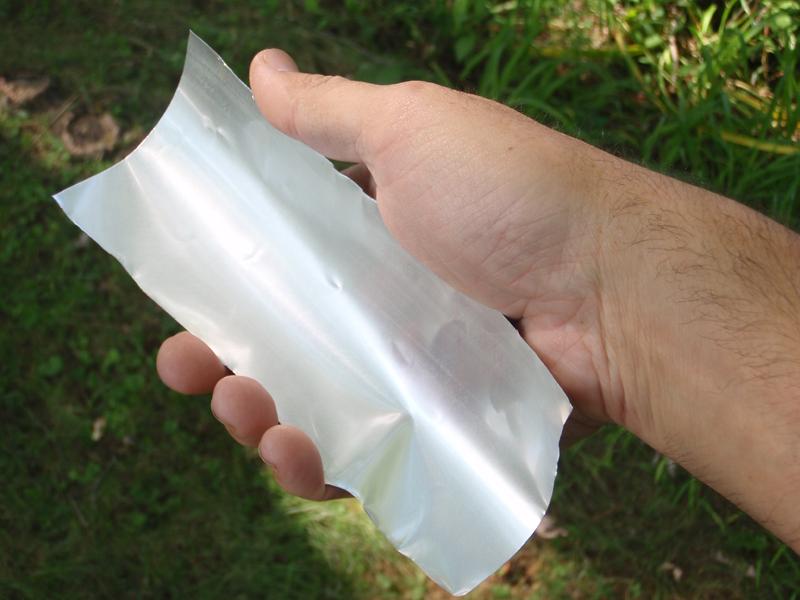
If your beer can isn’t shiny on the outside, cut the thing in half to expose the metallic interior. It’s not going to be as shiny as a signal mirror, but it can still reflect light as a form of signaling for help. You can also hang it up in a prominent place and let it twist in the wind as an “automated” distress signal.
Survival stove
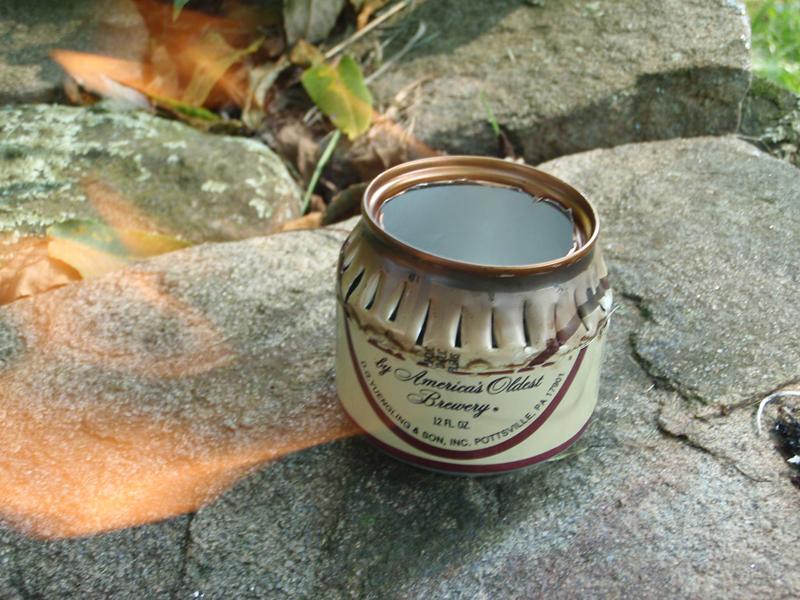
Cut a can in half, add a few ounces of high test alcohol to the bottom half, and you’ve got yourself a dollar-friendly camping stove. No, it won’t perform like a Jet boil, but the price is right. You can also prowl the Internet for plans to build a can stove with little jets around the top lip, which will increase the stove’s efficiency.
Cheap survival kit container
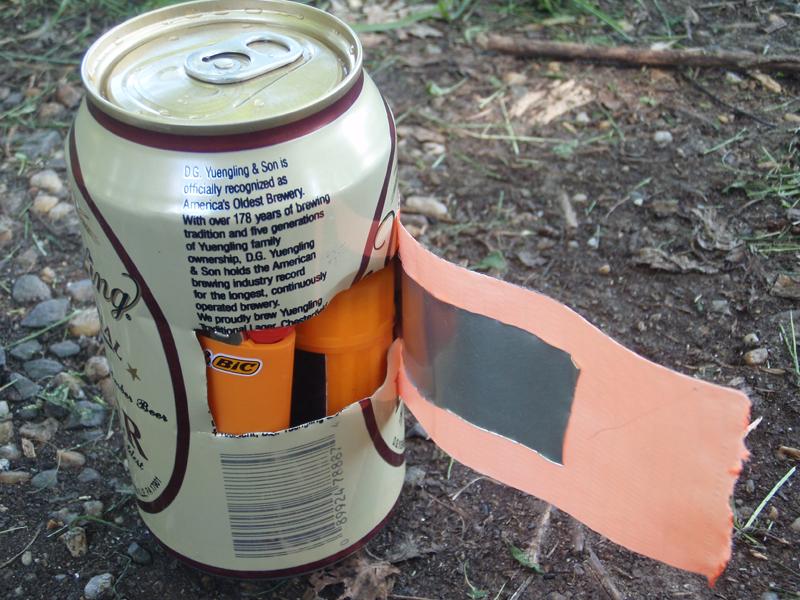
You can create a waterproof and fairly inconspicuous survival kit for dirt cheap if you are able to get your beer out of the can in a creative way (like through the side) and leave the pull tab intact. Use your knife to punch a hole in the side of the can, and pour the beer into another container. Let the can dry out inside. Load it up with fire starters, first aid gear, signaling equipment and all of the other usual suspects. Wrap 20 to 30 feet of duct tape around the can as a way to seal it up. Then you can tell your buddies about the duct tape wrapped beer can that could save your lives.
Camp perimeter alarm
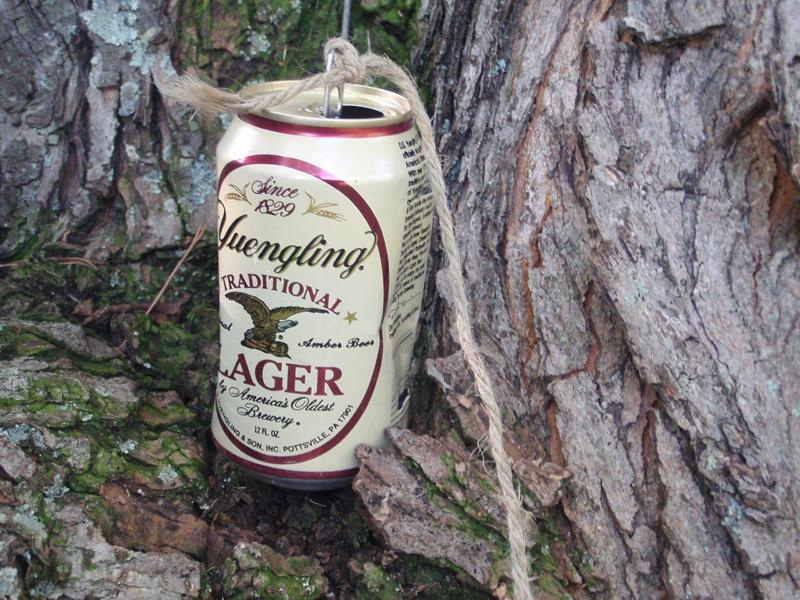
This trick is ideal for bear country. Throw a few small rocks in an empty beer can and set it up somewhere that the can will fall down with a crash. Tie a string to the can, and then run the string around your tent or camp as a tripwire about one foot off the ground. Just one bump of the line from man or beast will send the noisy can tumbling down from its perch, and hopefully, give you a head start on the intruder.
Fishing float
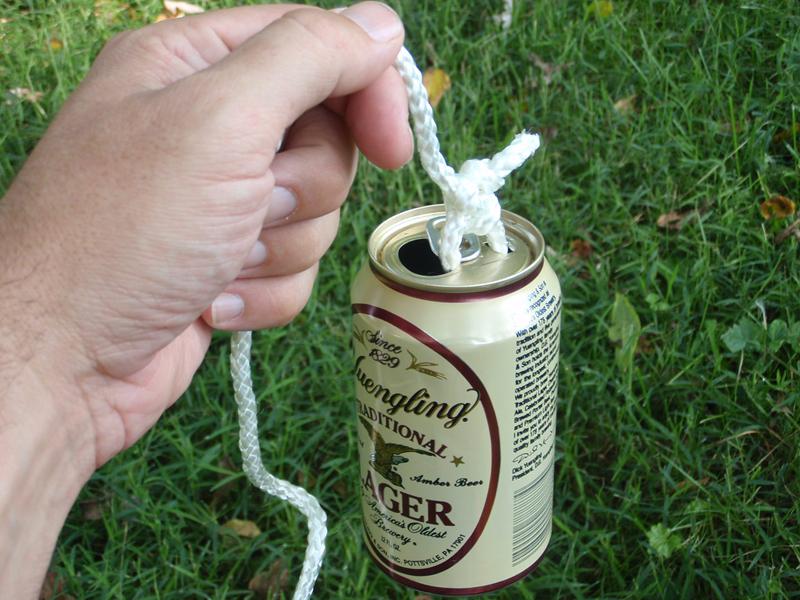
By punching a new hole in a can, next to the hole you drink from, you can thread a small rope through the openings to make a float for fishing nets, trotlines and fish traps. Yes, this one is teetering on the brink of littering more than the others, but keep in mind that this is survival that we are talking about here. You can go on a recycling quest later if you lose some cans but save your life. To finish the float, use a small rough rock to grind the can openings smooth to reduce wear and tear on the float line. We don’t want the float to cut the line.
Projectile points
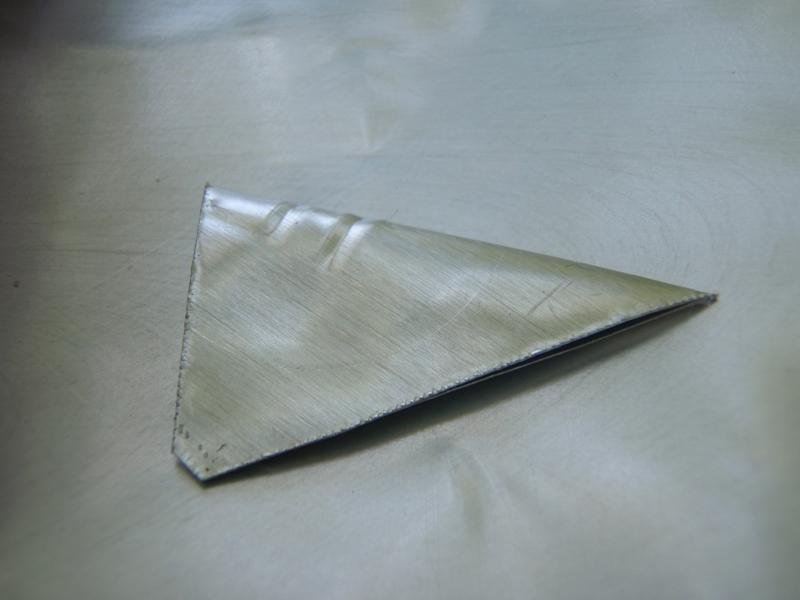
More dangerous than a wooden point, any sharp projectile point can add damage to an arrow or spear impact. You could even fashion the harpoon tip to be detachable, and run a line off of it. Cut the can into different size and shape pieces, and fold the pieces into cones and flat triangles to assist in small-game hunting during survival situations. Obviously, this isn’t as good as a store-bought broadhead, so stick to small game with this one.
Drink the beer
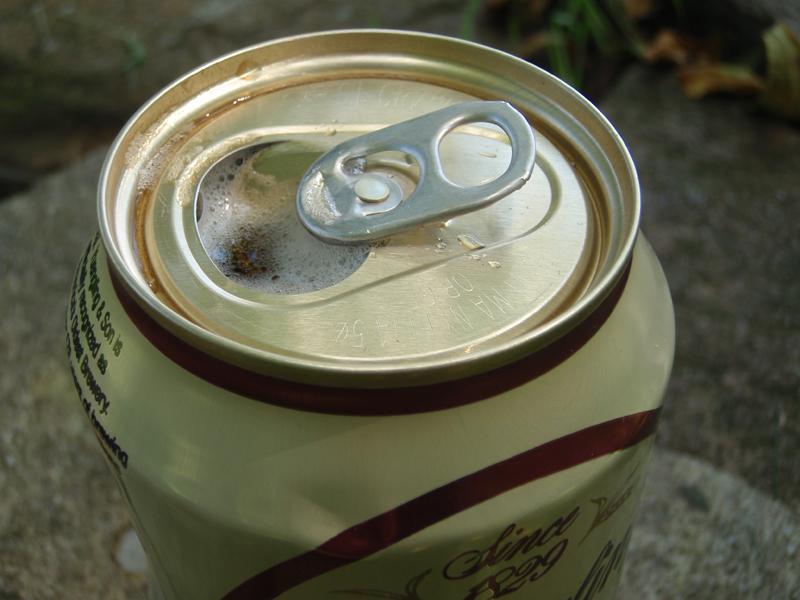
So many of our forebears survived in areas and situations with bad water because of their knowledge of beer brewing. Beer has been used for thousands of years as a pathogen-free beverage, and a way to store food calories. You could store a barrel of wheat or barley in your little shack, which you would never be able to keep the rats and bugs out of, or you could have a barrel of beer which still has much of the same calorie value, and it wouldn’t be tainted by pests. Drink the beer for both hydration and calories in the event of an emergency but make sure you drink responsibly – always.
With the proper know-how, a beer can could save your life. Survival expert Tim MacWelch demonstrates 14 ways to use a beer can during a survival situation.
This Crazy Off Grid Device Literally Makes Drinkable Water From Fresh Air:
According to NASA, the U.S. is expecting a 100-YEAR LONG MEGADROUGHT.
It's already begun. Ask the farmers in California. They know.
Every survivalist knows that water is of critical importance. You NEED an independent water source that you can count on!
As an interesting "survival rehearsal" - imagine that you turned the tap on right now and nothing came out. How long would you last?
But what if there was another water source literally hidden in plain sight. That's right, I'm talking about the atmosphere!
The amazing thing about getting water from the natural moisture in the air... is that it is ALWAYS available.
This gives you real water security!
Learn more about how to tap into "Nature's secret water reservoir" and stay hydrated when TSHTF!
Watch the video:
😳 What Tinnitus Does To Your Brain Cells (And How To Stop It)
After 47 years of studies and countless brain scans done on more than 2,400 tinnitus patients, scientists at the MIT Institute found that in a shocking 96% of cases, tinnitus was actually shrinking their brain cells.
As it turns out, tinnitus and brain health are strongly linked.
Even more interesting: The reason why top army officials are not deaf after decades of hearing machine guns, bombs going off and helicopter noises…
Is because they are using something called "the wire method", a simple protocol inspired by a classified surgery on deaf people from the 1950s...

I Can't Help Showing This Off:
If you haven't heard of Claude Davis yet do yourself a huge favor and watch this video.
One of the smartest guys I ever had the pleasure of meeting, Claude set-up a unique prepping system that changed his life forever.
I already tried it myself and let me tell... you I was completely blown away... His surprising tactics could make your life easier and give you the peace of mind you deserve.
Don't just take my word for it... watch his short video and decide for yourself.

Most People Don't Have The Guts To Try This:
An amazing discovery in an abandoned house in Austin, Texas: A lost book of amazing survival knowledge, believed to have been long vanished to history, has been found in a dusty drawer in the house which belonged to a guy named Claude Davis.
Remember... back in those days, there was no electricity... no refrigerators... no law enforcement... and certainly no grocery store or supermarkets... Some of these exceptional skills are hundreds of years of old and they were learned the hard way by the early pioneers.
>> Click here to find out about them now
We've lost to history so much survival knowledge that we've become clueless compared to what our great grandfathers did or built on a daily basis to sustain their families.
Neighbors said that for the last couple of years Claude has tried to unearth and learn the forgotten ways of our great-grandparents and claimed to have found a secret of gargantuan proportions. A secret that he is about to reveal together with 3 old teachings that will change everything you think you know about preparedness:
>>> Click Here To Watch His Short Video <<<

More Off-Grid And Survival Resources:

What REALLY Happens When You Bury a Shipping Container? (Hint: It's A Bit Crazy...)
Shipping containers are all the rage - but if you are thinking about buying one, you MUST watch this video first:
There's a general belief that if you bury a shipping container you can create an awesome root cellar / storm shelter / survival bunker.
But is a shipping container strong enough to handle the pressure?
Watch the video to see what happens:
What Really Happens When You Bury a Shipping Container? (Click To Watch Video)








